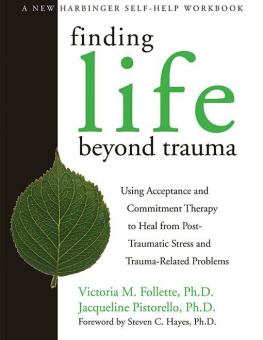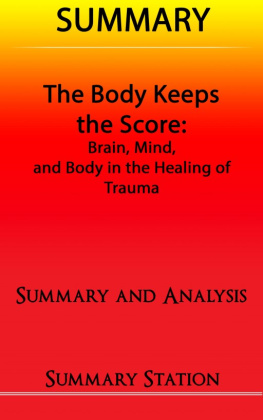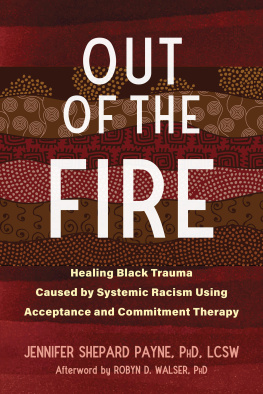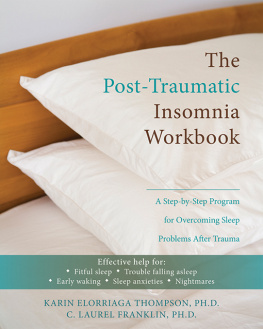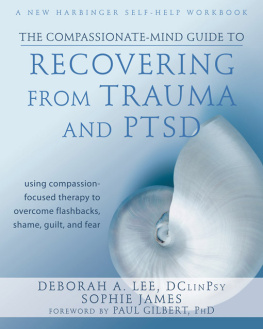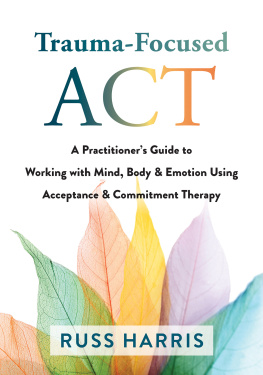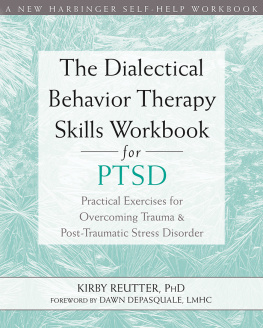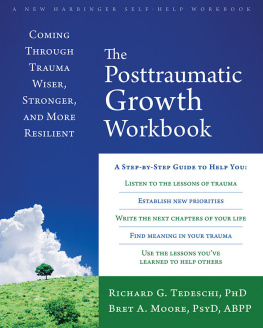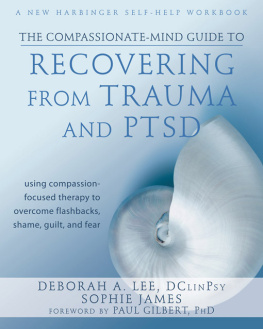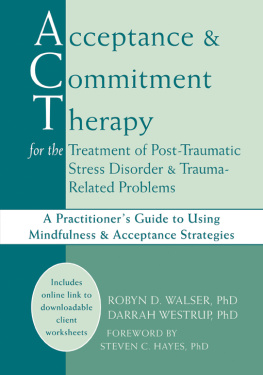
Publishers Note
This publication is designed to provide accurate and authoritative information in regard to the subject matter covered. It is sold with the understanding that the publisher is not engaged in rendering psychological, financial, legal, or other professional services. If expert assistance or counseling is needed, the services of a competent professional should be sought.
Permission to use the image La condition humaine granted by the National Gallery of Art.
Permission to use the image Regular Division of the Plane IV (Horsemen) granted by the M.C. Escher Company.
Distributed in Canada by Raincoast Books
Copyright 2007 by Victoria Follette and Jacqueline Pistorello
New Harbinger Publications, Inc.
5674 Shattuck Avenue
Oakland, CA 94609
www.newharbinger.com
Acquired by Tesilya Hanauer; Cover design by Amy Shoup;
Edited by Carole Honeychurch; Text design by Tracy Carlson
All Rights Reserved
Epub ISBN: 9781608823105
The Library of Congress has cataloged the print edition as:
Follette, Victoria M.
Finding life beyond trauma : using acceptance and commitment therapy to heal from post-traumatic stress and trauma-related problems / Victoria M. Follette and Jacqueline Pistorello.
p. cm.
ISBN-13: 978-1-57224-497-9
ISBN-10: 1-57224-497-6
1. Post-traumatic stress disorderTreatment. 2. Psychic traumaTreatment. 3. Acceptance and commitment therapy. I. Pistorello, Jacqueline. II. Title.
RC552.P67F65 2007
616.8521dc22
2007013041
To my students and my clients, who teach me about life beyond trauma every day.
VF
To my mother, Maria Formolo Pistorello, whose lifelong commitment to following ones values served as the beacon of light in times of uncertainty in my life.
JP
Contents
Finding a New Way Forward
In the developed world, dying of starvation or thirst is rare enough to make national news. If you think about it, that fact is a small indication of a larger human reality. We have learned a great deal about how to control our external world, and in parts of the world where we have resources to apply, weve come to expect it as a matter of course.
When pain intrudes unexpectedly, that assumption is disrupted. Violent attacks, tragic accidents, natural disasters, wars, sexual and emotional abuse, and dozens of other such events show that the external world is not always controllable, regardless of our knowledge and resources. These painful challenges can suddenly shift the apparent arena of control from the external to the internal world. The pain may have begun on the outside, but it lives on in the inside, in the form of painful memories, difficult emotions, negative thoughts, or unpleasant urges. Once there, people do what people do with painful memories, difficult emotions, negative thoughts, or unpleasant urges. And thats often a problem.
Humans relative skill in controlling their external world often fails them when applied to the world within. It is hard to get rid of painful memories, reduce difficult emotions, or eliminate negative thoughts and urges. Indeed, modern psychological research is showing us that part of what often turns pain into trauma is the misapplication of some of the very skills we most trust in controlling the world outside the skinjudging, planning, problem solving, and controllingto the world inside the skin.
The human mind is a problem-solving organit cannot help but do what it does. When we look at our own pain, we initially cannot help but judge it, anticipate it, reason with it, and try to get it to go away. And sometimes that may even be usefulbut for those picking up this book wanting help, I suspect it is not. It is very likely youve already tried that. And if it produced everything you want, you would not be picking up this book. You are looking for a new way forward.
You have found one.
Until the secret of how the human mind works is revealed, it tends to do what it has always donelike a pony who knows only one trick endlessly performing it. But modern psychological research is also revealing that it is possible to do truly new things with our memories, emotions, thoughts, and urges than what problem-solving minds normally do. These mindfulness and acceptance methods seem to allow us to move quickly in the direction of a life we value without first waiting for the war inside us to be won.
This book will show you how to take that alternative path.
What you will find in these pages is an approachAcceptance and Commitment Therapy (ACT, said as a single word, not initials)that takes the view that your life is not a problem to be solved. A life is to be lived, with the past exactly as it has been but with a future as broad as your most deeply held values. Moving in that direction requires learning how to let go of some kinds of problem solving. It means learning how to feel feelings as feelings, and thinking thoughts as thoughts. This is a workbook, because it takes work to learn an alternative path. Mere understanding is not enough. Minds cannot fully grasp how to solve problems in a nonjudgmental way because solving problems planfully and judgmentally is what minds do.
ACT allows us a new way forward when some of our most trusted skills are no longer very effective. It offers suggestions for what to do when little we can think of is very likely to be helpful. It gently points toward exciting alternatives when seemingly nothing we can do will do.
The scientific evidence base for ACT in the areas of trauma, pain, anxiety, and depressionareas most readers of this book will likely know something about in personal termsis growing rapidly. The body of evidence is not as large as for some other more traditional approaches, so people who have never worked on these problems with traditional cognitive behavioral or other more fully empirically supported methods may wish to consider that. Nevertheless, there is enough solid evidence that it seemed time to put this new way forward into the hands of those who may benefit, especially those who need a fresh approach.
I have known these two authors for many years. Victoria Follette is a valued colleague and friend who first brought attention to the applicability of acceptance and mindfulness to trauma, and Jacque Pistorello is not only one of the best ACT therapists I knowshe is also my dear wife. I suppose that means I am not objectivebut I did watch how this book came together and I know how much care, compassion, and concern has gone into it. I am excited by the possibility that many thousands will be helped.
You are in a unique position. If you are willing to be guided by your own pain, it has purchased the openness to learning a new way forward. Id like to believe that is part of why fate and happenstance have placed this book in front of you. You would have no reason to learn a new way if the old ways had continued to work adequately. Two people I respect and trust a great deal will walk with you through this learning process.
When you are ready, turn the page. It is time to begin to learn a new way.
Steven C. Hayes, University of Nevada
Acknowledgments
We would like to thank a number of individuals who have contributed to this book. Several authors have allowed us to either reproduce some of their original exercises in this volume or to adapt them to the specific aims of this book. These are Steven C. Hayes and Spencer Smith, James Pennebaker, Michael Addis and Chris Martell, J. T. Blackledge, and Joseph Ciarrochi. Robyn Walser, Kelly Wilson, and Sonja Batten have helped hone our thinking about the application of ACT to trauma treatment. We would also like to acknowledge others whose work has either inspired us or provided the foundation for some of the elements in this book. Many trauma researchers have had an important influence over the years. Pam Alexander, John Briere, Christine Courtois, Chris Brewin, Judith Herman, Patricia Resick, Edna Foa, Terry Keane, and Josef Ruzek are just a few of the people who paved the way for us and helped us to find our own path. The teachings of individuals from the mindfulness traditions, such as Kabat-Zinn, Pema Chodron, and Thich Nhat Hahn, along with other local resources, have been valuable in many ways. Marsha Linehan, Robert Kohlenberg, and Neil Jacobson also were essential teachers who helped define the new wave in behavior therapy. Our appreciation and gratitude also go to our students Adria Pearson, Jennifer Plumb, and Karen Murphy for their assistance in developing some of the chapters in this book. Special thanks goes to another one of our students, Kate M. Iverson, who wrote for this book and also provided encouragement and support when deadlines were looming. Emily Neilan was wonderful in helping us with formatting and a number of technical tasks.

